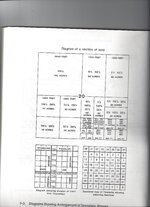Gold_Striker
Full Member
New to prospecting IRL, so how do I notice the boundries of a claim if I find myself accidently entering one by a main road of course or obviously well used trail. I know to look around for.
Piles of rocks
signs
markers
some kind of visial indicator
It's not enough to rely on the BLM maps if you ask me. Maybe someone marked it and is headed to the office.
Piles of rocks
signs
markers
some kind of visial indicator
It's not enough to rely on the BLM maps if you ask me. Maybe someone marked it and is headed to the office.
Upvote
0







